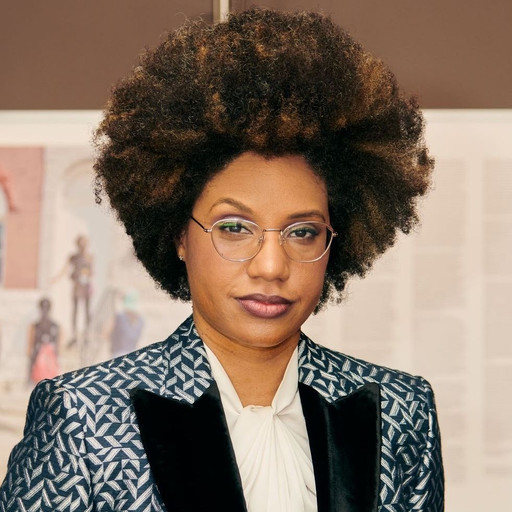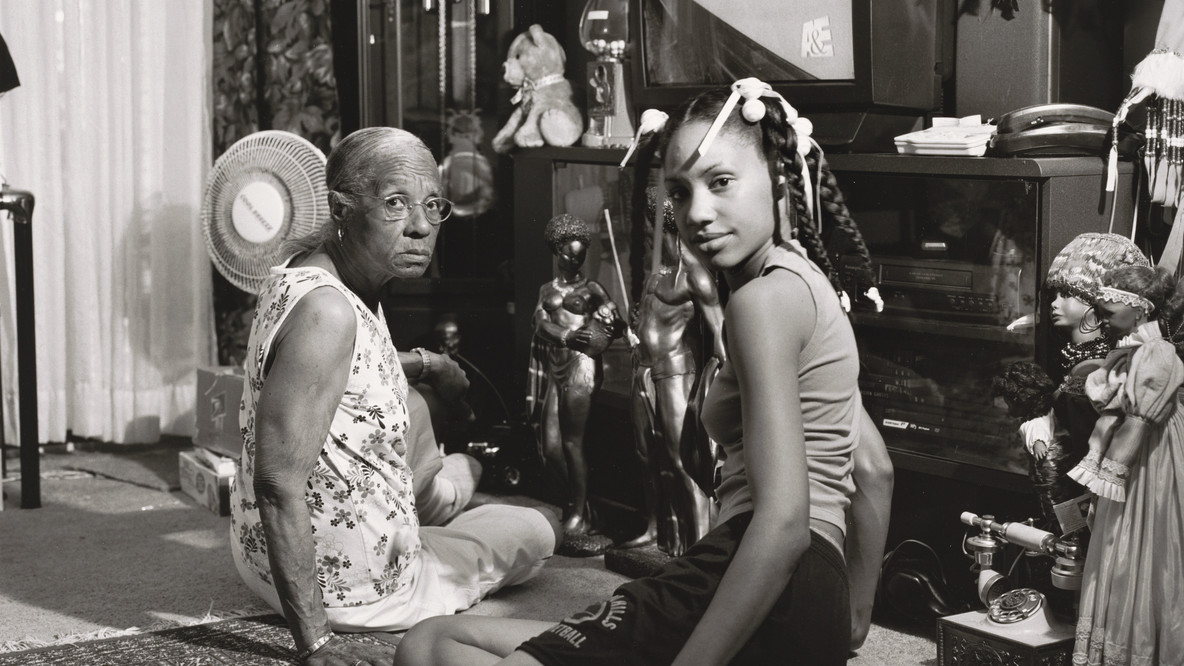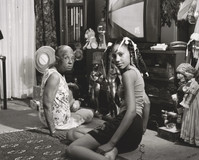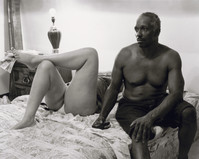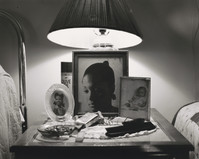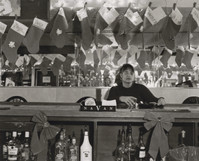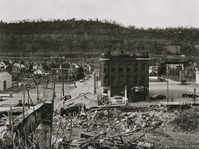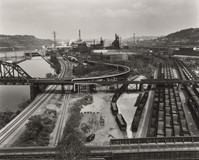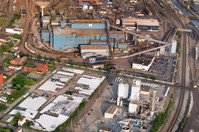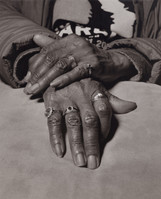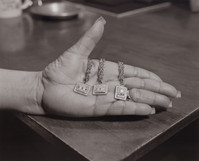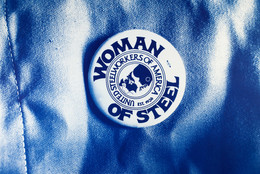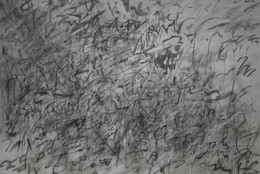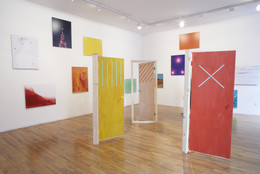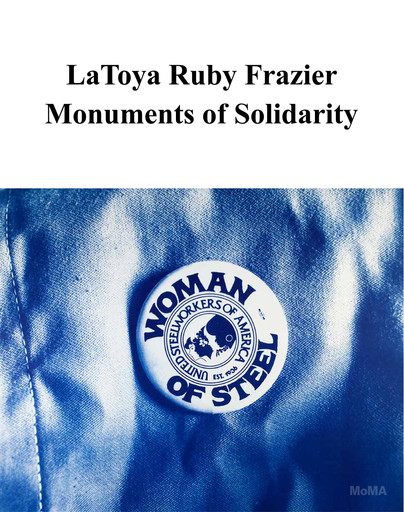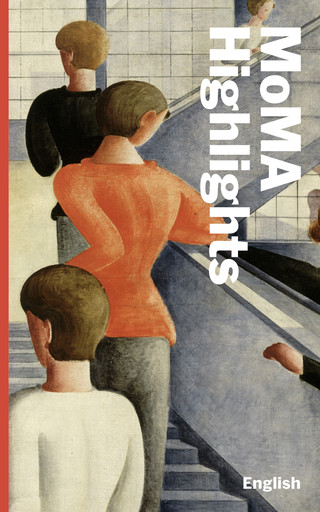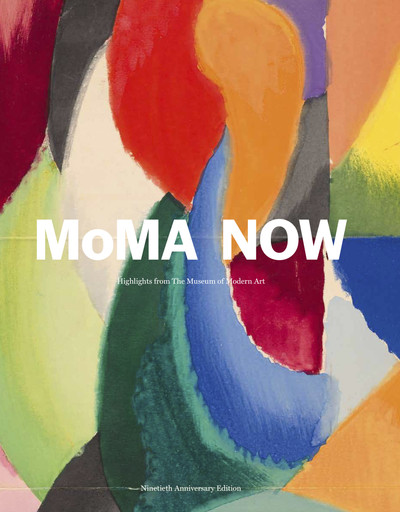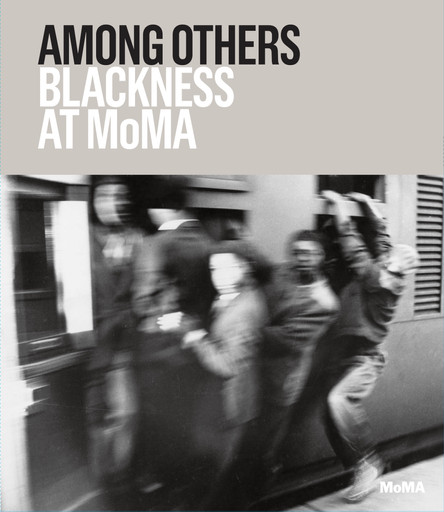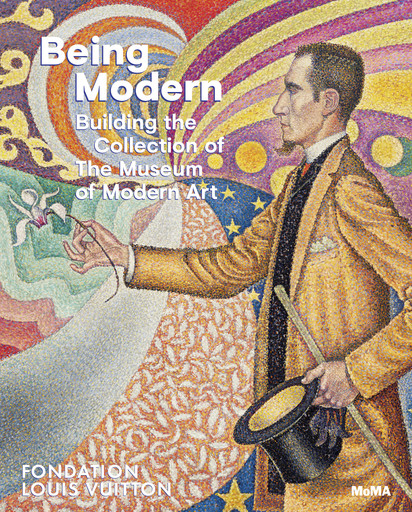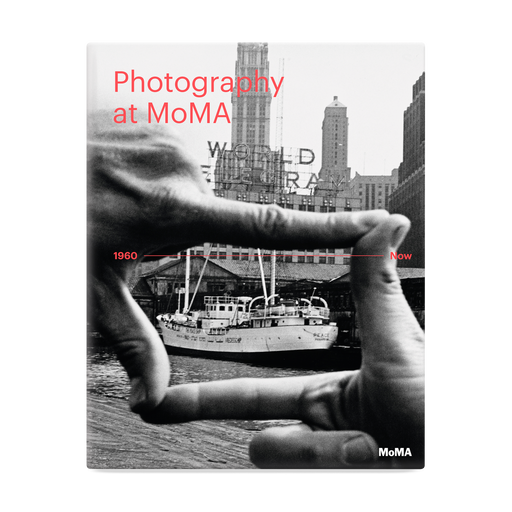“It became about making a family album of images, day to day, that defies what I see in the media.”
LaToya Ruby Frazier
In 2009, LaToya Ruby Frazier went to the Braddock Carnegie Library in her hometown of Braddock, Pennsylvania, and borrowed the book Images of America: Braddock, Allegheny County. In it, Frazier read about Andrew Carnegie’s steel plant and the men and women who migrated to Pennsylvania from Scotland, Germany, and Italy. Yet she recalls that “by the time I turned to the last page I realized that all the African Americans who had contributed to this great history were excluded.” This erasure of Braddock’s Black working-class residents spurred Frazier to turn her camera first onto her own family and then on working-class communities across the country and beyond.
LaToya Ruby Frazier was born in Braddock in 1982. Growing up in her grandmother’s house in Braddock’s poorest neighborhood, known as the Bottom due to its low elevation and proximity to the steel mill and railroad, Frazier was an avid drawer and watercolorist. In high school, Frazier got a hold of a digital camera and began taking photographs of her friends, family, and neighborhood. At 16, Frazier went to Edinboro University in Pennsylvania, where she took classes with Kathe Kowalski, who fostered her interest in photography and introduced her to the work of photographers such as Julia Margaret Cameron and Carrie Mae Weems and writers such as James Baldwin and Roland Barthes.
Frazier’s first large-scale series, The Notion of Family, is a collaborative photo-documentary project by Frazier, her mother, and her namesake, Grandma Ruby. Throughout, photographs such as Grandma Ruby and Me, depict Frazier and her grandmother in the family home, seated on the floor in front of a television playing the Arts & Entertainment Channel. Surrounding them is Grandma Ruby’s collection of dolls and knicknacks, arranged carefully and resembling a still life or cabinet of curiosities. In other photographs, Frazier depicts Braddock’s crumbling infrastructure, and her family in the midst of health crises. Each photograph resists and corrects the stories set forth in texts like the one she encountered in the library, defiantly inserting Frazier’s family and their community back into the narrative.
More recently, Frazier traveled to Lordstown, Ohio, to document the local United Auto Workers Union chapter amid the closing of the Lordstown General Motors Complex. Like Frazier’s family in Braddock, Lordstown and its residents faced the impact of deindustrialization and the myriad crises that arose in its wake. For The Last Cruze, Frazier worked with the local unions, conducting in-depth interviews with union members and picturing them at home, at the union hall, and at the plant. The result is a large-scale installation that uses a bright red-orange metal frame resembling an industrial assembly line to anchor the photographs, text, and video that tell the story of the last Chevrolet Cruze and those who built it.
Frazier’s work reveals her wide-ranging interests and influences—from the social documentarians of the 1930s to the conceptual work of artists such as Alan Sekula and Martha Rosler of the 1970s. Yet it is the work of African American photographer and filmmaker Gordon Parks that continues to serve as her touchstone. In 1966, Parks asserted, “I chose my camera as a weapon against all the things I dislike about America—poverty, racism, discrimination.” Like Parks, Frazier views her camera as a weapon, wielding it to elevate the stories and voices of those previously erased from the record of history. About her projects, Frazier has said, “There has to be a deep empathy. There’s a need to be compassionate and [to] want to really, truly see someone’s humanity when they’re at their lowest.”
Antoinette D. Roberts, Curatorial Assistant, Department of Photography, 2023
Opening quote is from the video LaToya Ruby Frazier Makes Moving Pictures, Art21, 2012.
